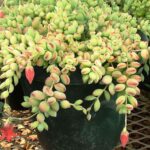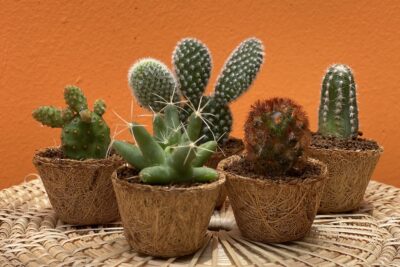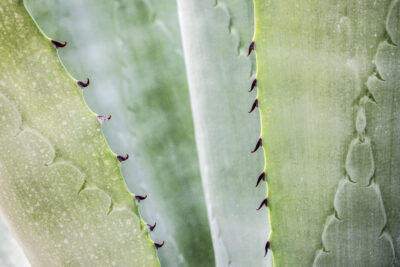
Expert Tips for Thriving Succulents: Assessing Plant Health

Succulents have become increasingly popular in recent years, popping up in home decor, gardens, and even wedding bouquets. Known for their unique shapes and ability to store water in their leaves, these hardy plants have captured the hearts of many plant enthusiasts. However, keeping succulents thriving can be a challenge, especially for beginners. Understanding how to assess and maintain the health of your succulents is crucial for their long-term survival.
We will explore expert tips for assessing the health of your succulents. We will discuss common issues that can affect succulents, such as overwatering and pests, and provide practical advice on how to address these problems. Additionally, we will delve into the signs of a healthy succulent, including vibrant color, plump leaves, and firm roots. By the end of this article, you will have a better understanding of how to evaluate the health of your succulents and take the necessary steps to ensure their well-being.
- Regularly check for signs of pests or disease on your succulents
- Inspect the leaves and stems for any discoloration, spots, or holes
- Look for any unusual growth patterns or wilting
- Ensure proper drainage by using well-draining soil and pots with drainage holes
- Avoid overwatering your succulents, as this can lead to root rot
- Provide adequate sunlight for your succulents, as they thrive in bright light conditions
- Rotate your succulents occasionally to promote balanced growth
- Avoid overcrowding your succulents, as this can lead to poor air circulation and increased risk of disease
- Remove dead or decaying leaves from your succulents to prevent the spread of disease
- Consider using organic pest control methods, such as neem oil or insecticidal soap, if necessary
- Seek professional advice or consult a plant specialist if you are unsure about the health of your succulents
- Frequently Asked Questions
Regularly check for signs of pests or disease on your succulents
One of the key factors in ensuring the health and longevity of your succulents is to regularly inspect them for any signs of pests or diseases. These small but mighty plants are susceptible to various pests like aphids, mealybugs, and spider mites, which can cause damage if not addressed promptly.
Here are some expert tips to help you assess the health of your succulents:
- Inspect the leaves, stems, and roots of your succulents for any visible signs of pests or disease. Look for discoloration, spots, or webbing on the leaves, as well as any unusual growth patterns.
- Pay attention to any changes in the texture or appearance of the plant. Dry, shriveled leaves or stems could indicate underwatering, while mushy or discolored parts may suggest overwatering or root rot.
- Use a magnifying glass to check for tiny insects or eggs on the plant. Pests like aphids and spider mites are often difficult to spot with the naked eye.
- If you notice any signs of pests or disease, take immediate action. Remove the affected parts or isolate the plant to prevent further spread. You can also use organic insecticides or natural remedies to control the infestation.
Regularly assessing the health of your succulents will not only help you catch any issues early on but also ensure that your plants thrive in the long run. Remember, prevention is always better than cure when it comes to maintaining the well-being of your succulents.
Inspect the leaves and stems for any discoloration, spots, or holes
 Challenging Succulents: Types that Require Extra Care to Thrive
Challenging Succulents: Types that Require Extra Care to ThriveWhen it comes to assessing the health of your succulents, the first step is to carefully examine the leaves and stems for any signs of discoloration, spots, or holes. These visible symptoms can often indicate underlying issues that need to be addressed.
Start by checking the color of the leaves. Healthy succulent leaves typically have vibrant and uniform colors, depending on the species. Any noticeable changes in color, such as yellowing, browning, or blackening, may signal a problem. It could be a sign of nutrient deficiency, overwatering, or even pest infestation.
Additionally, inspect the leaves for any spots or lesions. Dark spots or patches on the leaves can be a sign of fungal or bacterial infections. If you notice any soft, mushy spots, it could be an indication of rot caused by overwatering or poor drainage.
Another crucial aspect to look out for is the presence of holes in the leaves or stems. These holes could indicate the presence of pests, such as mealybugs, aphids, or spider mites. These tiny creatures can quickly damage your succulents if left untreated.
Remember to pay attention to both the upper and lower sides of the leaves, as well as the stems. Some pests may hide on the undersides or in the crevices, making it important to thoroughly inspect all parts of the plant.
By regularly inspecting your succulents for any discoloration, spots, or holes, you can catch potential issues early on and take the necessary steps to ensure your plants thrive.
Look for any unusual growth patterns or wilting
When assessing the health of your succulents, it's important to keep an eye out for any unusual growth patterns or signs of wilting. These can be indicators of underlying issues that need to be addressed.
 The Proper Depth for Planting Succulents in the Ground: A Guide
The Proper Depth for Planting Succulents in the Ground: A GuideFirst, check for any signs of abnormal growth. Look for elongated stems or stretched-out leaves, as this can suggest that your succulent is not receiving enough light. On the other hand, if you notice a stunted or compact growth, it may be a sign of overcrowding or insufficient nutrients.
Wilting is another red flag to watch out for. While succulents are known for their ability to store water, they still require proper hydration. If you notice leaves that appear shriveled, limp, or excessively dry, it's a sign that your plant is not getting enough water. On the contrary, if the leaves become mushy and discolored, it could indicate overwatering or poor drainage.
Remember to examine your succulents thoroughly, paying attention to any abnormalities in growth and signs of wilting. Identifying these issues early on will allow you to take the necessary steps to ensure the health and vitality of your succulents.
Ensure proper drainage by using well-draining soil and pots with drainage holes
One of the most important factors in maintaining healthy succulents is ensuring proper drainage. Succulents are native to dry, arid environments and have adapted to survive in conditions where water is scarce. Therefore, it's crucial to replicate these conditions in their growing environment.
To ensure proper drainage, start by using well-draining soil specifically formulated for succulents. These soils are typically composed of a mixture of sand, perlite, and peat moss. This combination allows water to pass through quickly, preventing the roots from sitting in waterlogged soil, which can lead to root rot.
In addition to using the right soil, it's essential to choose pots with drainage holes. These holes allow excess water to escape, preventing water from accumulating at the bottom of the pot. If your favorite decorative pot doesn't have drainage holes, consider using a nursery pot with holes and placing it inside the decorative pot. This way, you can enjoy the aesthetics while ensuring proper drainage.
Remember to water your succulents only when the top inch of soil is completely dry. Overwatering is one of the most common causes of succulent health issues, so it's always better to underwater than overwater. When you do water, make sure to water thoroughly until water drains out of the bottom of the pot, ensuring the entire root system receives moisture.
 How frequently should I apply Miracle-Gro Succulent Plant Food?
How frequently should I apply Miracle-Gro Succulent Plant Food?Tips:
- Use well-draining soil specifically formulated for succulents
- Choose pots with drainage holes
- Water only when the top inch of soil is dry
- Water thoroughly until water drains out of the bottom of the pot
By following these expert tips for proper drainage and watering, you'll create a healthy environment for your succulents to thrive and grow.
Avoid overwatering your succulents, as this can lead to root rot
One of the most common mistakes people make when caring for succulents is overwatering them. Succulents are desert plants that have adapted to survive in arid conditions by storing water in their leaves and stems. As a result, they are incredibly drought-tolerant and do not require frequent watering like other houseplants.
When succulents are overwatered, their roots become saturated and are unable to absorb oxygen properly. This leads to root rot, a condition where the roots begin to decay. Signs of root rot include yellowing or wilting leaves, mushy or blackened roots, and a foul odor coming from the soil.
To avoid overwatering your succulents, it is crucial to understand their watering needs. Typically, succulents should be watered only when the top inch of soil feels dry. This can vary depending on factors such as the type of succulent, the potting mix used, and the environmental conditions.
When watering your succulents, it is important to provide a thorough soak, allowing water to flow out from the drainage holes. However, make sure to empty any excess water from the saucer or tray, as standing water can also contribute to root rot.
 Watering Succulents After Repotting: What You Need to Know
Watering Succulents After Repotting: What You Need to KnowRemember, it is better to underwater your succulents than to overwater them. Succulents are incredibly resilient and can survive for extended periods without water. By adopting a mindful watering routine, you can help your succulents thrive and avoid the common pitfalls of overwatering.
Provide adequate sunlight for your succulents, as they thrive in bright light conditions
Succulents are known for their ability to tolerate harsh conditions, but they still need sunlight to thrive. Place your succulents in an area that receives bright, indirect sunlight for at least six hours a day. South or east-facing windows are ideal for ensuring they get the right amount of light.
Keep in mind that not all succulents have the same light requirements. Some varieties, like Echeverias and Aeoniums, prefer more shade and can get sunburned if exposed to too much direct sunlight. On the other hand, varieties such as Sedums and Haworthias can handle more intense sunlight.
If you notice your succulents stretching or leaning towards the light, it's a sign that they are not getting enough sunlight. Adjust their position or consider using artificial grow lights to supplement their light needs.
Remember to rotate your succulents every few weeks to ensure even growth and prevent them from leaning towards the light source.
Rotate your succulents occasionally to promote balanced growth
 Succulent Care: A Guide to Cliff Cotyledon and Crassulaceae
Succulent Care: A Guide to Cliff Cotyledon and CrassulaceaeOne of the key factors in maintaining healthy succulents is ensuring that they receive adequate sunlight. While succulents naturally love the sun, it is important to rotate them occasionally to promote balanced growth.
Rotating your succulents allows all sides of the plant to receive equal amounts of sunlight. This helps prevent your succulent from leaning towards the light source and encourages even development and growth. Additionally, rotating your succulents exposes different parts of the plant to sunlight, preventing the bottom leaves from becoming shaded and eventually withering away.
When rotating your succulents, it is best to do so every two to three weeks, especially if they are placed near a window or in an area with uneven lighting conditions. Simply turn the pot or container in a clockwise or counterclockwise direction to ensure that all sides of the succulent receive their fair share of sunlight.
Benefits of rotating your succulents
- Promotes symmetrical growth: By rotating your succulents regularly, you encourage them to develop evenly on all sides, resulting in a more symmetrical and aesthetically pleasing plant.
- Prevents leaning: Succulents have a natural tendency to lean towards the light source. Rotating them helps prevent this leaning, ensuring that the plant grows upright and maintains its balance.
- Prevents etiolation: Etiolation is a common issue among succulents that are not receiving enough sunlight. By rotating your succulents, you expose all parts of the plant to sunlight, preventing etiolation and promoting healthy growth.
- Prevents bottom leaves from withering: Succulents tend to grow upwards towards the light, causing the lower leaves to become shaded and eventually wither away. Rotating your succulents helps prevent this by ensuring that all parts of the plant receive adequate sunlight.
Remember, rotating your succulents is just one of the many ways to promote their overall health. By providing them with the right amount of sunlight, water, and proper care, you can help your succulents thrive and enjoy their unique beauty for years to come.
Avoid overcrowding your succulents, as this can lead to poor air circulation and increased risk of disease
When it comes to cultivating healthy succulents, one critical factor to consider is avoiding overcrowding. While it may be tempting to group multiple succulents together for aesthetic purposes, this can have detrimental effects on their overall health.
Overcrowding can lead to poor air circulation, creating a favorable environment for the growth of fungi and bacteria. The lack of airflow restricts the plants' ability to transpire, resulting in increased moisture levels around the foliage and soil. These moist conditions can encourage the development of diseases, such as fungal infections and rot.
 Can Succulents Be Revived After Drying Out?
Can Succulents Be Revived After Drying Out?To ensure optimal plant health, it is essential to provide sufficient spacing between succulents. This allows for proper air circulation, reducing the risk of disease and promoting healthy growth. When arranging your succulents, consider their mature size and growth habits to determine the appropriate spacing.
Signs of overcrowding:
Identifying signs of overcrowding is crucial in assessing the health of your succulents. Keep an eye out for the following indicators:
- Yellowing or wilting leaves: When succulents are overcrowded, their leaves may start to yellow or wilt. This is often a sign of limited access to nutrients and sunlight.
- Stunted growth: If succulents are not provided with enough space to expand their root systems, their growth may become stunted. Smaller and weaker plants are more susceptible to disease and pest infestations.
- Increased pest activity: Overcrowded succulents are more prone to attracting pests, such as aphids or mealybugs. The lack of airflow and moisture buildup create an inviting environment for these unwanted visitors.
If you notice any of these signs, it is essential to take action and address the overcrowding issue promptly.
How to address overcrowding:
If you find that your succulents are overcrowded, follow these steps to rectify the situation:
- Reposition: Carefully remove the overcrowded succulents from their current location and replant them in areas with more space. This will allow each plant to have adequate airflow and room for growth.
- Propagate: If the overcrowding is severe, you may need to propagate some of the succulents. Gently separate individual plants and repot them in new containers. This will not only address the overcrowding but also provide an opportunity to expand your succulent collection.
- Monitor: After addressing the overcrowding issue, closely monitor the health and growth of your succulents. Ensure they receive proper care, including adequate sunlight, well-draining soil, and appropriate watering.
By addressing overcrowding and providing sufficient spacing for your succulents, you can create an environment that promotes optimal plant health and reduces the risk of diseases. Remember that each succulent is unique, so understanding their growth requirements is essential for their well-being.
Remove dead or decaying leaves from your succulents to prevent the spread of disease
Regular maintenance is essential for keeping your succulents healthy and thriving.
One important task is to remove any dead or decaying leaves from your plants.
 Can Repotting Revive a Dead Succulent?
Can Repotting Revive a Dead Succulent?Dead or decaying leaves not only detract from the overall aesthetics of your succulents, but they can also serve as a breeding ground for disease and pests. By promptly removing these leaves, you can prevent the spread of any potential issues and ensure that your succulents stay strong and vibrant.
To remove dead or decaying leaves, simply grasp them near the base and gently pull them away from the plant. If the leaves do not come off easily, you can use a clean pair of scissors or pruning shears to carefully trim them off. Be sure to sterilize your tools before and after use to minimize the risk of introducing any pathogens to your plants.
It is important to note that not all leaves that appear dead or decaying are actually a cause for concern. Some succulent species naturally shed their lower leaves as they grow, and this is a normal part of their life cycle. However, if you notice an excessive amount of dead or decaying leaves or if they are accompanied by other signs of distress, such as wilting or discoloration, it may indicate a more serious underlying issue that needs to be addressed.
In addition to removing dead leaves, it is also a good practice to regularly inspect your succulents for any signs of pests or diseases. Look for any unusual spots, discoloration, or pests on the leaves or stems. If you spot any concerning signs, take action immediately to prevent further damage.
By regularly assessing the health of your succulents and taking proactive measures to address any issues, you can ensure that your plants thrive and continue to bring beauty and joy to your space.
Consider using organic pest control methods, such as neem oil or insecticidal soap, if necessary
When it comes to ensuring the health of your succulents, pest control is an essential aspect to consider. While succulents are generally resilient and can withstand certain pests, it's important to take action if you notice any signs of infestation.
 How to Safely Ship a Succulent: Tips for Mailing Plants
How to Safely Ship a Succulent: Tips for Mailing PlantsOne effective method of pest control is using organic solutions like neem oil or insecticidal soap. These options are safe for your succulents and the environment, making them an ideal choice for any plant lover.
Neem oil: Derived from the seeds of the neem tree, neem oil has natural insecticidal properties that can effectively eliminate pests. It works by disrupting the feeding and reproductive patterns of insects, eventually killing them off. To use neem oil, simply dilute it according to the instructions provided and spray it onto the affected areas of your succulents. Repeat the process every 7-14 days, or as needed.
Insecticidal soap: Made from natural fatty acids, insecticidal soap is another safe and efficient pest control option. It works by suffocating the insects, ultimately leading to their demise. To use insecticidal soap, mix the recommended amount with water and apply it directly to the affected parts of your succulents. Ensure thorough coverage, including the undersides of leaves where pests often hide. Repeat the process as necessary, usually every 7-10 days.
It's important to note that while neem oil and insecticidal soap are effective against common succulent pests like aphids, mealybugs, and spider mites, they may not be suitable for all types of pests. If you're dealing with a severe infestation or are uncertain about the specific pest plaguing your succulents, consult a local gardening expert for tailored advice.
Remember, prevention is key when it comes to pest control. Regularly inspect your succulents for any signs of pests, such as discoloration, webbing, or distorted growth. Catching infestations early on allows for easier treatment and minimizes the risk of damage to your beloved plants.
By incorporating organic pest control methods like neem oil and insecticidal soap into your succulent care routine, you can ensure the continued health and vitality of your plants. Take proactive measures to keep pests at bay, and your succulents will thrive in their beautiful, pest-free environment.
Seek professional advice or consult a plant specialist if you are unsure about the health of your succulents
 Succulent Transplant Shock: Causes, Symptoms, and Solutions
Succulent Transplant Shock: Causes, Symptoms, and SolutionsWhen it comes to assessing the health of your succulents, it's always a good idea to seek professional advice or consult a plant specialist. While succulents are generally low-maintenance plants, they can still face various health issues that may require expert intervention.
Here are some expert tips to help you assess the health of your succulents:
1. Observe the overall appearance
- Check for any discoloration or wilting leaves.
- Inspect the stem for any signs of rot or mushiness.
- Look for pests such as mealybugs, aphids, or spider mites.
- Take note of any unusual growth patterns or deformities.
2. Examine the roots
- Gently remove the succulent from its pot.
- Inspect the roots for any signs of rot, such as a foul odor or blackened roots.
- Healthy roots should be firm, white, and well-established.
3. Check the soil moisture
- Stick your finger about an inch into the soil to check for moisture.
- Succulents prefer well-draining soil, so if the soil feels excessively wet, it may indicate overwatering.
- If the soil feels bone dry, it might be a sign of underwatering.
4. Assess sunlight exposure
- Consider the amount of sunlight your succulent is receiving.
- Succulents generally thrive in bright, indirect light.
- If your succulent is not getting enough light, it may appear stretched or pale.
- On the other hand, excessive sunlight can lead to sunburn or scorching.
Remember, each succulent species has its own specific care requirements, so it's essential to research the needs of your particular plants. If you notice any concerning signs or are unsure about the health of your succulents, don't hesitate to seek professional advice. Taking prompt action can help ensure the long-term well-being of your succulents.
 Caring for Succulents Planted in a Fire Stick: A Comprehensive Guide
Caring for Succulents Planted in a Fire Stick: A Comprehensive GuideFrequently Asked Questions
1. How often should I water my succulents?
Water your succulents every 1-2 weeks, allowing the soil to fully dry out between waterings.
2. Can succulents survive in low light conditions?
Most succulents require bright, indirect sunlight to thrive, but there are some varieties that can tolerate low light conditions.
3. What kind of soil is best for succulents?
Use a well-draining soil mix specifically made for succulents, or create your own by mixing potting soil with perlite or pumice.
4. How do I propagate succulents?
Succulents can be propagated through leaf or stem cuttings. Allow the cuttings to dry out for a few days before planting them in well-draining soil.
If you want to read more articles similar to Expert Tips for Thriving Succulents: Assessing Plant Health, you can visit the Care and Maintenance category.






You Must Read